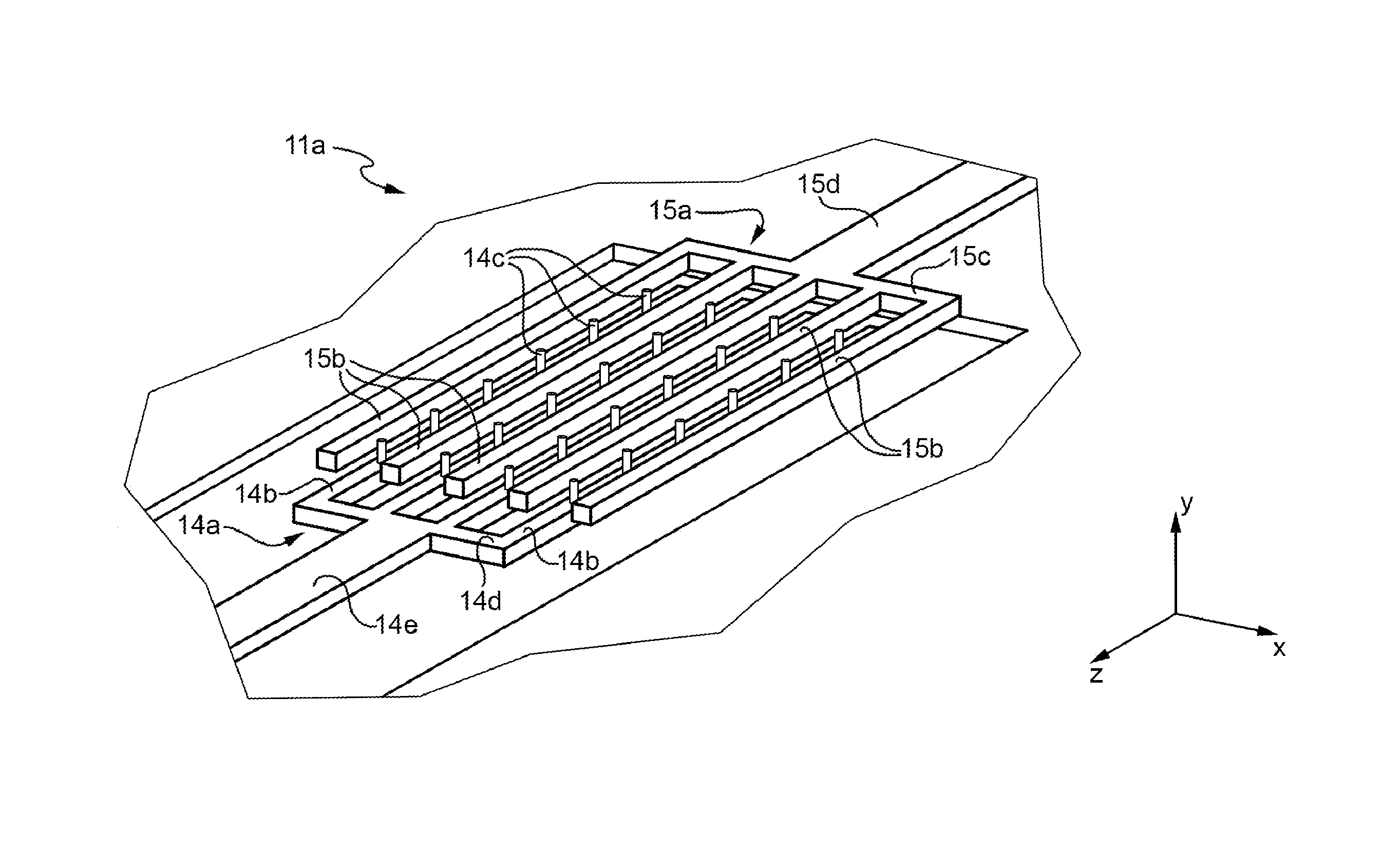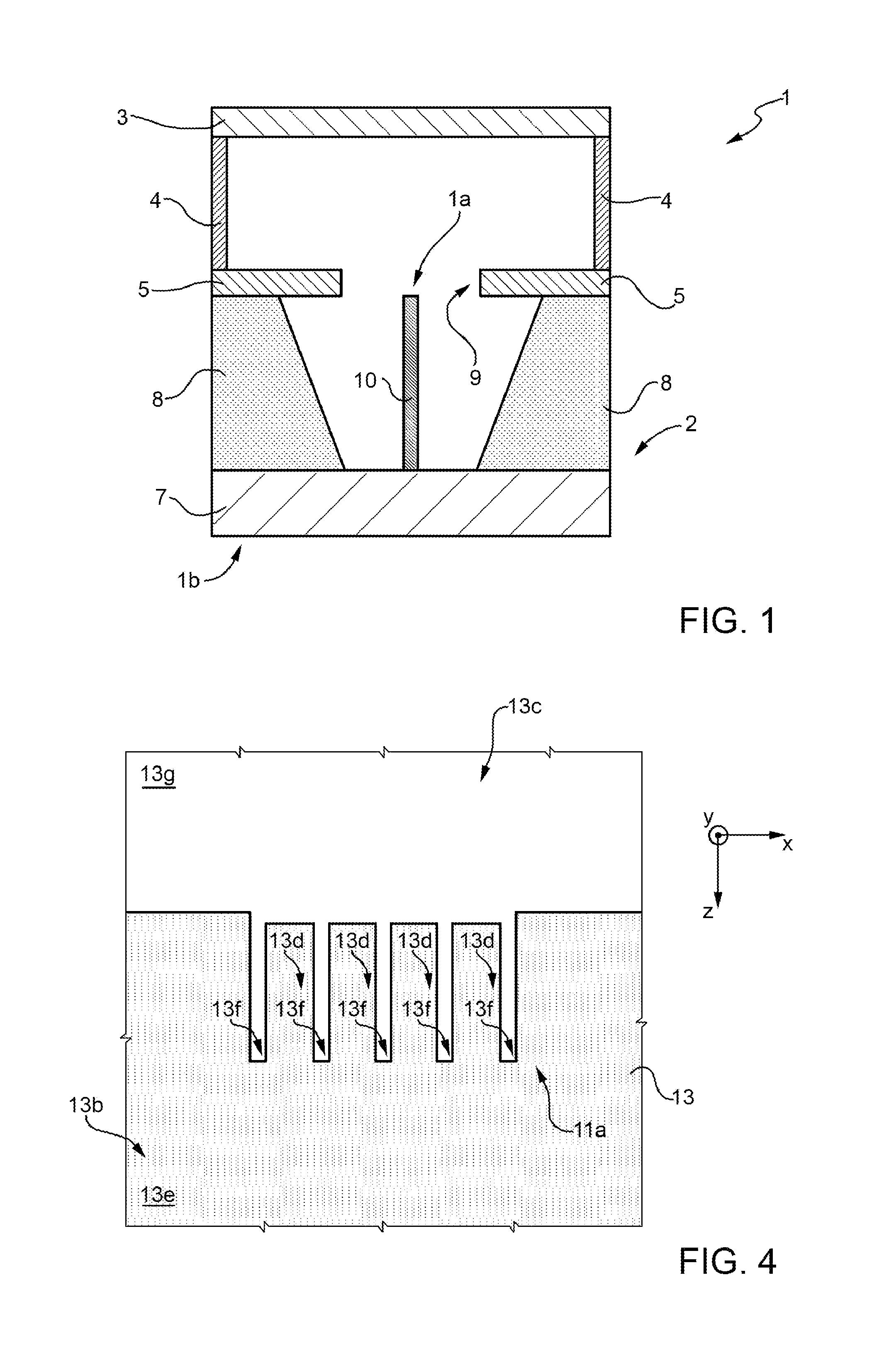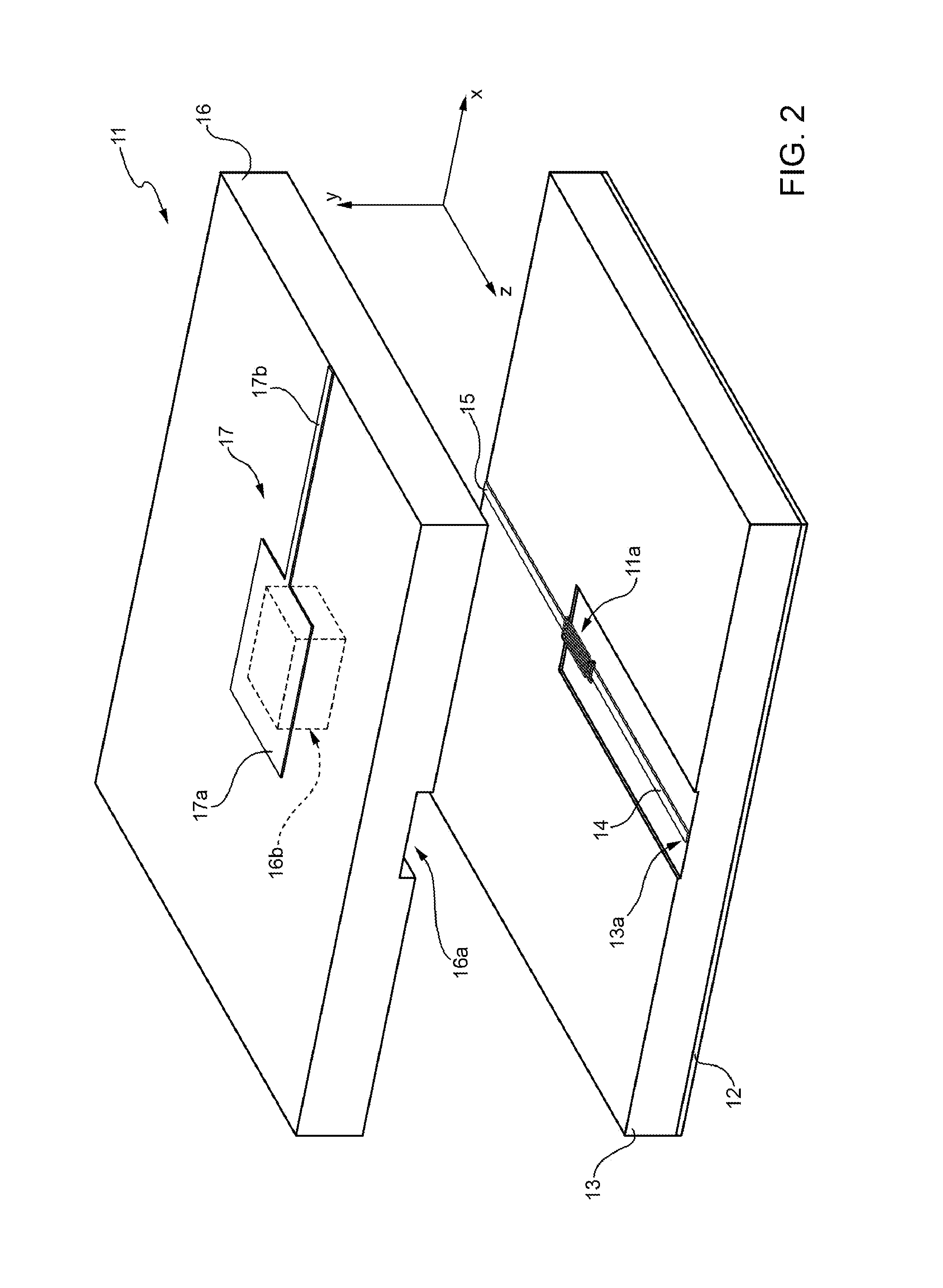Electron-emitting cold cathode device
a cold cathode, electro-emitting technology, applied in the direction of electron-emitting electrode/cathode, discharge tube electron gun, non-electron-emitting electrode, etc., can solve the problems of inability to operate at frequencies in the order of thz, and inability to meet the requirements of semiconductor technology. to achieve the effect of increasing the operating frequency of these devices
- Summary
- Abstract
- Description
- Claims
- Application Information
AI Technical Summary
Benefits of technology
Problems solved by technology
Method used
Image
Examples
Embodiment Construction
[0082]The following description is presented to enable a person skilled in the art to make and use the invention. Various modifications to the embodiments described will be readily apparent to those skilled in the art, and the generic principles herein may be applied to other embodiments and applications without, however, leaving the scope of protection of the present invention.
[0083]Thus, the present invention is not intended to be limited to the embodiments shown, but is to be accorded the widest scope consistent with the principles and features disclosed herein and defined in the appended claims.
[0084]In general, the present invention relates to an electron-emitting cold cathode device.
[0085]In particular, the electron-emitting cold cathode device according to the present invention comprises:[0086]a cathode electrode that lies on a cathode plane and includes, in an active region of the device, a cathode fingered structure comprising one or more cathode straight-finger-shaped term...
PUM
 Login to View More
Login to View More Abstract
Description
Claims
Application Information
 Login to View More
Login to View More - R&D
- Intellectual Property
- Life Sciences
- Materials
- Tech Scout
- Unparalleled Data Quality
- Higher Quality Content
- 60% Fewer Hallucinations
Browse by: Latest US Patents, China's latest patents, Technical Efficacy Thesaurus, Application Domain, Technology Topic, Popular Technical Reports.
© 2025 PatSnap. All rights reserved.Legal|Privacy policy|Modern Slavery Act Transparency Statement|Sitemap|About US| Contact US: help@patsnap.com



